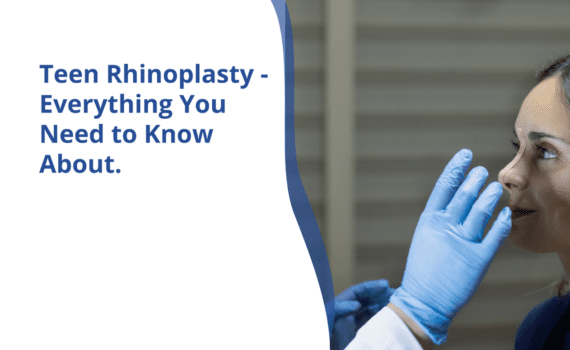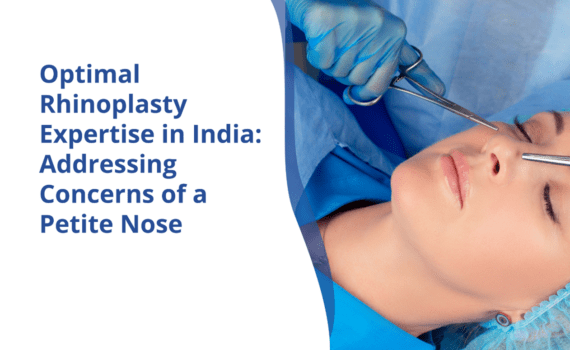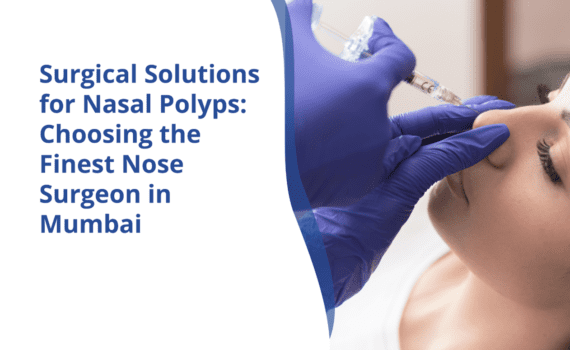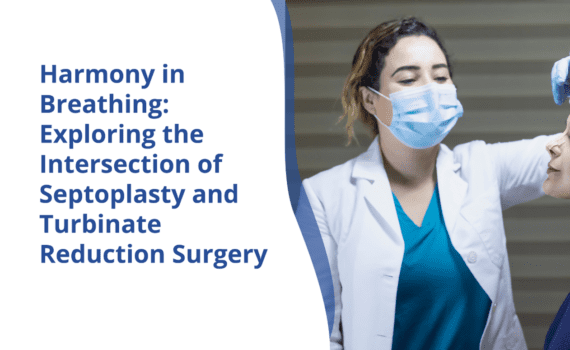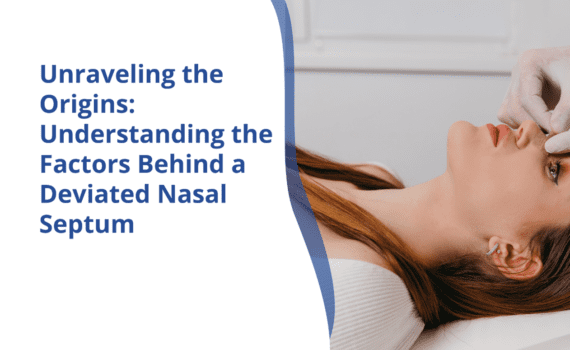
Unraveling the Origins: Understanding the Factors Behind a Deviated Nasal Septum
Though not a visible part of the nose, the nasal septum plays a vital role in how comfortably you breathe and the shape of the nose. It is fragile and comprises bone and cartilage covered with mucosal tissue. This inner wall separates the right and left nasal cavities.
A straight nasal septum runs down right in the middle of your nostrils, and each side of the nose has equal space. This ensures proper flow of the air and regular breathing. When the septum becomes deviated, crooked, or displaced, one side of the nose becomes smaller.
When the deviation is minimal, it is barely noticeable; however, when the displacement is significant enough, it can be visible in the shape of the nose. About 10-80% of people in the world have some deviation in the septum.
Many go through their lives without experiencing any problems with a deviated septum. Still, for some, the symptoms can be challenging to ignore and interfere with overall health and daily activities.
How Do I Know If I Have a Deviated Septum?
There are some physical and functional symptoms of deviated septum that make it easy to identify:
- Crooked nose shape and tip: The septum is a thin wall. A deviated or displaced septum can cause the nose’s structure to become crooked and the nasal tip to appear lopsided. In cases of severe deviation, the septum influences the alignment of cartilage and soft tissue. The lower portion of the septum, where it interacts with nasal tip cartilage, can result in an asymmetrical appearance.
- Difficulty breathing: The difference in the size of the cavities interferes with normal breathing through the nose. This becomes more apparent when you try to sleep, exercise, or participate in extensive sports activities that elevate the heart rate. Many people resort to mouth breathing, which drives the oral organs and eventually damages the teeth. Saliva drying also attracts decay, causing bacteria to breed in the mouth.
- Nasal congestion and obstruction in nostrils: When one side of the nose is smaller, it seems like the nose is blocked. It becomes very noticeable when you have a cold or allergy that causes the nasal passage to swell and the airway to narrow.
- Repeat sinus infections: Nasal congestion caused by a deviated septum can make sinus drainage difficult. This leads to frequent sinus infections and postnasal drip. Many people mistake sinus infections for colds and allergies and delay the symptoms. The sinus infections may be resistant to medications.
- Recurrent nosebleeds: A deviated septum makes air circulation inside the nasal passages difficult, making the surface of the nasal septum dry. This makes one prone to nosebleeds and increases the risk. This is more common with the giant nostril.
- Facial pain: Severe deviated septum when the surface in the nose touches causes pressure on the side of the nose and hence facial pain, which is usually one-sided.
- Headaches happen because of stiffness and sinus pressure caused by the deviated septum.
- Snoring: Noisy breathing during sleep can be caused by a deviated septum or swelling of the tissues in the nose. Snoring can help you and your household get a good night’s sleep.
- Nasal cycle awareness: The nose breathing cycle alternates from one side to another. So, one side is obstructed, and then the other side is. On a usual day, you will not notice the breathing, but the nasal cycle becomes quite noticeable in case of a septum or airway obstruction.
- Sleeping on one side: To optimize breathing, people prefer to sleep on the side where the nasal passage is not narrowed.
- Worsened sleep apnea: This is a condition in which a person stops breathing during sleep. A deviated septum can contribute to worsening this issue.
Secondary complications of the deviated septum can be ear infections.
When Should I Go To The Doctor?
If any of the symptoms bother you, it’s time to consult your healthcare provider. The doctor will ask about the symptoms and physically examine the nose from outside and inside. The doctor will then help decide the best action for a permanent resolution.
What causes a deviated septum?
Some people are born with a deviated septum. Some other causes of deviated septum are
- Impact injury to the nose that results in cartilage displacement
- Dedicatory factors
- Developed during the growth of the nose.
Turbinates are structures that sit on the septum. Usually, the septum is about 3.5 to 4 inches long and runs from the tip of the nose to the back of the throat. The septum deviation can be in the bone ca, cartilage, or both.
Deviated septum treatment
The deviated septum has two treatment options: nonsurgical and septoplasty. The non-surgical options focus on managing the symptoms of a deviated septum but are not permanent solutions. These include:
- Decongestants are meant to reduce the swelling in nasal tissues, helping the nasal airways on both sides open. There are two types of decongestants: pills and nasal sprays. Over-the-counter nasal sprays should be used with caution if they contain oxymetazoline or pseudoephedrine, which are not safe for daily use and may create dependency.
- Antihistamines help control and prevent allergy symptoms such as runny nose, stuffy feeling, and crusting. However, they can also cause drowsiness and affect one’s ability to do tasks like driving and assembling.
- Nasal steroid sprays help reduce swelling in the nasal passage and improve drainage. They take about one to three weeks to reach their maximum effect, so you must be patient with the treatment and follow the doctor’s directions.
Surgical repair of a Deviated septum
The surgical repair of a deviated septum is called septoplasty. It is an individualized or tapered invasive surgery that can straighten the septum. Septoplasty can also be combined with turbinate reduction or rhinoplasty (septorhinoplasty), influencing the cost of deviated septum surgery in India
The Procedure
Septoplasty aims to straighten and reposition the septum to the center of the nose. The process might require the septoplasty surgeon to cut and remove the parts of the septum or bend the cartilage and bone in the septum and then place them in the proper position.
The degree of improvement depends on the severity of the deviation. Most of the symptoms will completely disappear, but if you have a sinus issue or other nasal conditions that impact the tissue lining in the nose, the treatment will need more than surgery.
In many cases of a deviated septum, shifting the septum to one side might increase the size of the turbinates on that side. The surgeon might recommend a rhinoplasty along with septoplasty to address both issues at the same time. During the treatment, the surgeon can either attempt to reduce the size of the turbinates using radiofrequency reduction or remove a portion of the enlarged turbinate.
Septoplasty aims to ensure a normal nasal airway, reduce breathing discomfort, and ensure minimal complications to reduce the risk of revision. Here are some essential points about deviated septum surgery:
- It is an outpatient procedure and lasts for about 60 minutes,
- Septoplasty is done under general anesthesia.
- The incisions are made from the inside of the nose.
- Post-surgery, bruising, and swelling are minimal.
- A splint or splint will be placed in the nose for about a week, which the surgeon will remove after about a week.
In The Case Of Septorhinoplasty
- The surgery might require 2-3 hours
- The incision might be made between the nostrils for better access, but it fades away with time.
- Splints will be placed for about a week.
Results And Recovery Of Septoplasty
- It is expected to feel tired for a few hours after the surgery.
- The surgeon will place some packing around the nose to stop the bleeding, which will be removed before you leave the hospital.
- Expect some congestion in the nose for about two weeks post-surgery
- As the nose heals, avoid blowing the nose for a few days.
- Stay away from smoking and alcohol consumption.
- Sleep with your head elevated.
- Avoid strenuous activities and exercises.
- Avoid crowded places where you might have enough cigarette smoke or people with colds and coughs, which increases the chances of getting sick.
Septoplasty cost in India
Deviated septum surgery cost in India varies due to many factors, such as
- Severity of deviation
- Skill and experience of the surgeon
- Hospital or clinic facilities and amenities
- Additional procedures or treatments, such as functional or cosmetic rhinoplasty
- Location of the hospital or the clinic
- Insurance coverage or financial assistance
- Surgeon’s experience and expertise. A more experienced surgeon may charge higher fees for their services.
